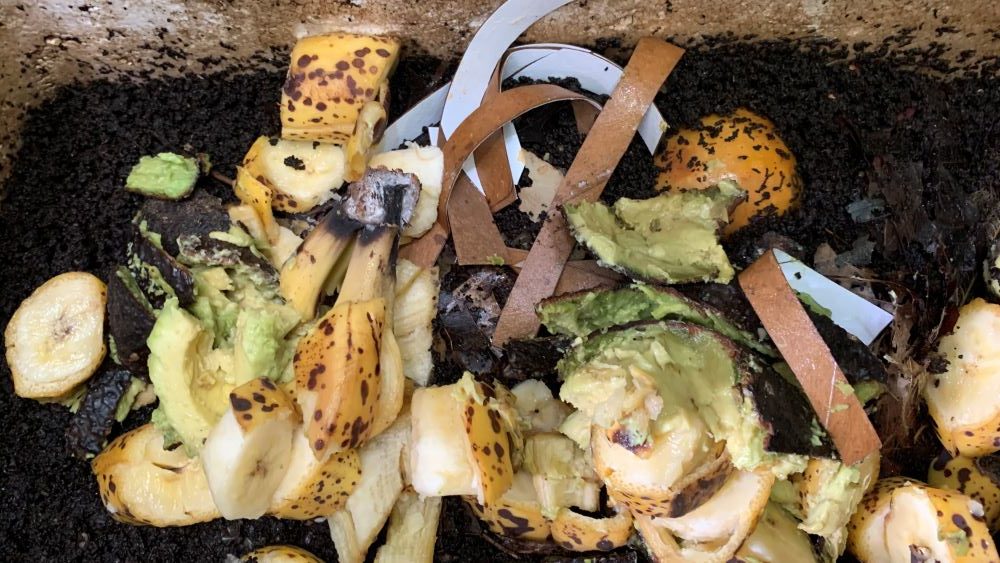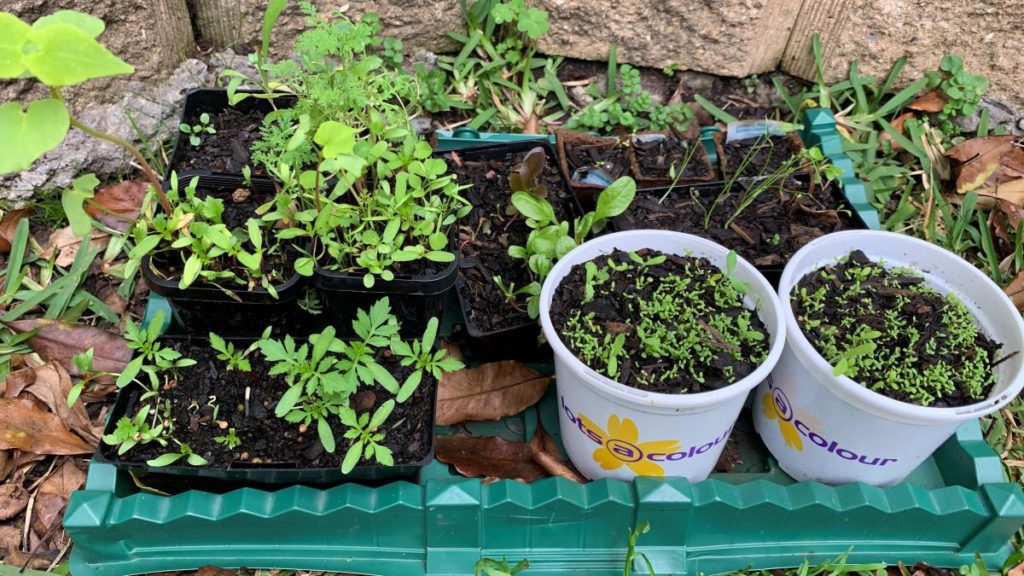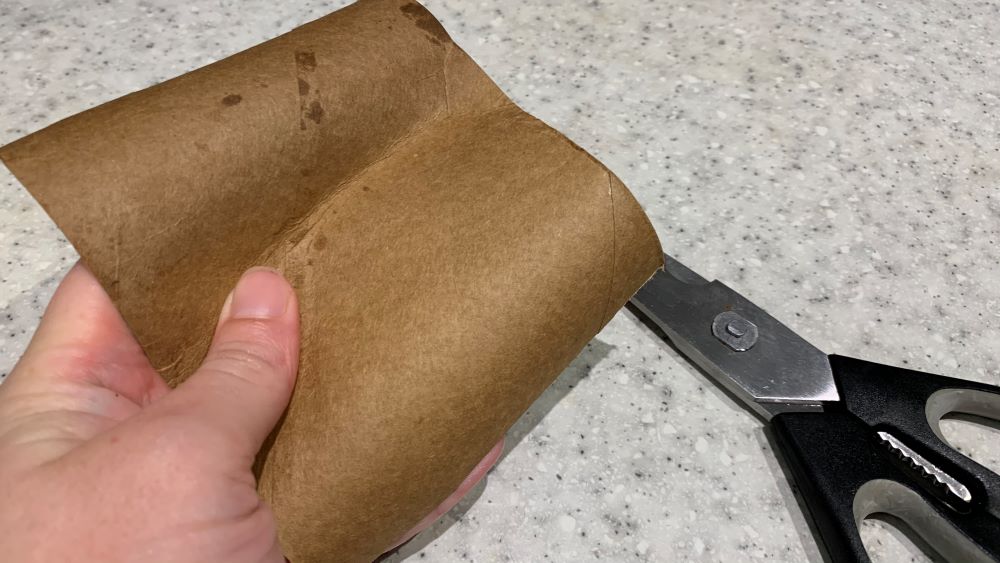Compost can form clumps if it is to wet, too dry, has large pieces or organic material or has large amounts of ground soil added. To stop compost from becoming clumpy it is essential to get the ratio of green and brown material right to balance the moisture content.
Avoid adding large amounts of clay soil and chop organic matter into small pieces before adding it to your compost.

This article will explore what you need to know about clumpy compost including the top causes, solutions, what to do with these clumps and how to prevent them.
Top causes of clumpy compost and solutions
Here are the top causes of clumpy compost and what you can do to solve each one.
1. Too dry
Compost that is too dry can cause clumps. Too much brown material including soil, cardboard, straw and hay can cause the compost to dry out. Leaving it uncovered or unattended for a long time can cause it to dry out on the surface and start to form clumps.
Solution
To solve this problem, turn your compost frequently to mix the moisture through and stop the top from drying out. Add green materials such as grass clippings or coffee grounds with added moisture to rehydrate the mix.
If you have a finished compost pile that you are not ready to use, it is important to keep it in a large pile rather than spread thinly. This will help to keep the whole pile moist. It is also important to turn it regularly with a garden fork.
2. Too wet
Compost that is too wet can form clumps or balls. The extra moisture from green materials like food scraps or the rain can cause chunks of compost material to form. If green materials are added in large amounts, are in a ratio of greater than 1:3 compared to brown material or are not mixed through this can cause clumping.

Solution
To prevent your compost from becoming too wet it is best to keep the green to brown material to a ratio of 1 part green to 3 parts brown. This means that when you add food scraps you may also need to take some time to find and add brown material too. I like to keep a bag of fall leaves nearby to add to my compost if it becomes too wet.
Make sure green materials including food scraps are cut into small pieces and mix them through your compost with a compost stirrer, garden fork or turn your tumbler.
3. Too much ground soil
If you have added large amounts of ground soil to your compost this can cause clumping. Ground soil, particularly if it is high in clay can stick together in your compost and will not always mix through well.
I like to add 1 shovel full of ground soil to my new compost piles to increase the soil bacteria balance. Adding too much ground soil however can cause it to form clumps within the organic matter.
Solution
Avoid adding large amounts of ground soil. Any soil attached to plant or weed roots will be fine but try to make the rest of your compost from organic materials such as fall leaves, old straw, hay, mulch, food scraps, chicken manure, coffee grounds and shredded paper or cardboard.
4. Too many large compost pieces
Adding too many large pieces of organic matter to your compost bin can cause clumps to form. Adding cardboard or paper that has not been shredded, large food scraps (like a whole watermelon) can form clumps.

Dry organic matter like cardboard boxes will cause the pile to dry out and clumps of cardboard can form. It can also slow the breakdown process of your compost pile causing clumps.
Solution
Always chop up organic matter that you are adding to your compost bin. You can add cereal boxes but it is important to cut them up into strips or pieces before adding to avoid clumps.
For more on this, check out my article here: How to Compost Cereal Boxes | 6 Tips

Break up egg cartons, paper towel, weeds, large chunks of hay and spread through your compost. If you are adding lawn clippings, remember to spread them out and mix them through to avoid clumping.
Can I use clumpy compost?
You can use clumpy compost but there are a few things to check first.
1. Check out the size of the compost balls
Small chunks of compost that are less than the size of a golf ball will be fine to dig through your soil. You can use these to prepare soil for trees and shrubs and even your vegetable garden. Just avoid digging them through the patch where you grow your carrots. This can cause the carrots to grow sideways if they hit a compost chunk.
2. Check out what is in the compost balls
Break open one of the compost balls to see what is inside. If it looks, brown and dark then it is likely to be finished compost so it is great for your garden. It will break up when you dig it through your garden and over time as worms and soil bacteria break it down.
4. Decide what you will use it for
Chunks of compost can be scattered around large trees or shrubs as a slow release fertilizer, used as a top dressing for citrus or even thrown in the top of pots. You can use it as a mulch or dig them through your flower bed to prepare it for new plants.
If you want to use the compost for seed raising mix it is best to sieve it first to break up or remove the balls. Large chunks of compost can block seed growth.

How to break up compost balls
Here are the top ways to break up compost balls that have formed in your compost bins or piles.
- Mix the compost with a garden fork
- Sieve the compost through a wire rack
- Add more brown material to balance the water
- Add more green material if your compost is too wet
How to prevent clumping compost
Here are the best ways to prevent your compost from clumping at home.
1. Get the right mix of green and browns
Balance is key to avoid your compost forming clumps. Getting the right ratio of green material with moisture and brown material is important. I find that the best ratio is around 1 part green to 3 parts brown.
If you are having very wet weather or you are adding lots of vegetables with a high moisture content like watermelon you may need to add more brown materials to find the balance.

2. Stir the compost
Mixing your compost pile with a garden fork is essential to help to mix the ingredients through and prevent clumps. You can mix the pile regularly each fortnight or give it a stir every time you add something new.
4. Cut composting pieces into small bits
Make sure that any compost ingredients are chopped into small pieces before adding. Cut cardboard into shreds, chop food scraps into 1 inch pieces and shred paper. All of this will help to prevent them from clumping in your compost.

Clumpy Compost | Summary
Clumpy compost can be caused by an imbalance of green and brown material, too much soil being added, large pieces of carboard or too many wet food scraps. Keep your compost in balance to prevent these by adding green and brown material in a ratio of 1:3.
Break up the chunks with your spade or run them through a sieve. You can also throw them under your plants as an easy soil conditioner.
Happy growing
I am an accredited practicing dietitian, experienced gardener and a dedicated cook. I love writing and sharing my experience so you can learn from my successes and mistakes.
